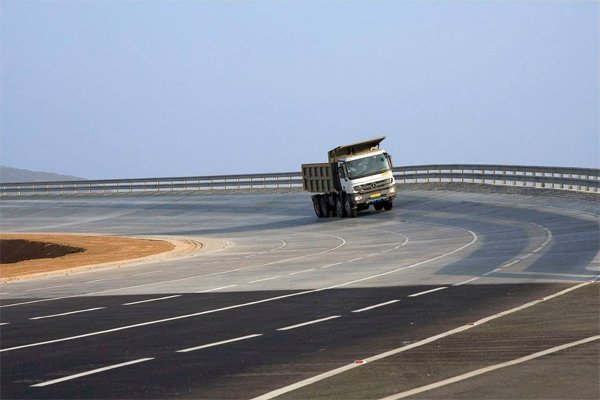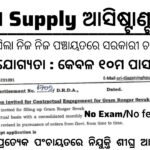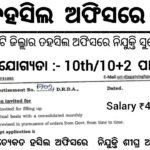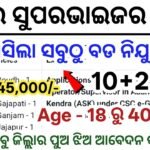Superelevation, or banked curve, is a key design feature in roads. It means tilting the road surface so the outer edge is higher than the inner edge. This tilt helps vehicles negotiate curves safely and comfortably. In India’s varied terrain and heavy traffic, correct superelevation is vital.
1. What Is Superelevation?

Superelevation (often abbreviated as “e”) is the cross slope added to a curved road. The outer edge is raised relative to the inner edge. This helps balance centrifugal force when vehicles turn. It prevents skidding and reduces the need for braking.
2. Why Do We Use Superelevation?
When a vehicle travels on a curve, it experiences centrifugal force that pushes it outward. Superelevation provides a component of force that acts inward. This helps:
- Reduce skidding and side-slippage.
- Allow higher vehicle speeds safely.
- Improve comfort for drivers and passengers.
- Reduce tyre wear and road maintenance costs.
In India, with mixed traffic and frequent speed changes, superelevation helps maintain safety on curved sections.
3. How Is Superelevation Expressed?
Superelevation is usually expressed as a ratio or percentage:
- As a ratio: e = height difference / width
- As a percentage: e = (height difference ÷ width) × 100%
For example, raising the outer edge by 0.06 m across a 6 m wide road gives e = 0.06 ÷ 6 = 0.01, or 1%.
Also Read Shoring in Construction: Types, Applications, Advantages and Best Practices in India
4. Superelevation Design Formula
The required rate of superelevation depends on curvature and speed, according to:
e + f = V² / (127 × R)
Where:
- e is superelevation (as decimal)
- f is side friction factor (depends on road surface, usually between 0.12 and 0.15)
- V is vehicle speed in km/h
- R is curve radius in meters
India’s road standards often treat f as effective friction to simplify. This formula helps find the minimum superelevation needed for safe travel.
5. Superelevation Limits in India
Indian road practice provides limits to superelevation:
- Varies based on road type (highway, urban street, rural road)
- IRC Codes recommend superelevation between 2% and 7% for most highways
- Steeper superelevation up to 8% is used cautiously for tight curves and steep gradients
- These limits balance safety, drainage, and construction feasibility
Designers must follow Indian standards such as the IRC 106 and IRC SP 30 for precise values.
6. Cross-Slope Transition and Widening
A road curve needs smooth transition zones:
- Normal camber on straight sections (e.g., 2.5%)
- Transition length where slope changes gradually to superelevation
- Full superelevation across the curve
- Reverse transition back to normal camber after the curve
Transition ensures safety and comfortable vehicle movement.
Also, curves often require road widening on the outer edge. It allows longer vehicles to turn without striking the curb. Widening depends on vehicle width, curve radius, and design speed.
7. Types of Superelevation Layouts
- Constant rate superelevation
Entire curve section has same tilt. - Transition superelevation
Slope changes gradually from normal camber to superelevation across an entry zone. - Composite superelevation
Combines a constant portion with transition portions for smoother vehicle response.
Most Indian highways use transition superelevation for both safety and pavement drainage.
8. Superelevation and Drainage
Proper drainage is essential during design:
- Superelevation should not cause water to pool on the road.
- Drains and crossfalls must manage rain water effectively.
- Excessive tilt may push water toward the inner curb.
- Designers need to balance superelevation with proper cross-fall for drainage.
9. Advantages of Proper Superelevation
- Safety on curves under wet and dry conditions
- Vehicle control and reduced crash risk
- Higher allowable speeds on curved roads
- Reduced tyre wear and smoother ride quality
- Better water runoff from the road surface
10. Challenges and Disadvantages
- Steeper superelevation can cause discomfort for pedestrians and cyclists
- Higher construction cost due to extra excavation or embankment
- Drainage issues if transitions are abrupt
- Heavily tilted roads may be hazardous for slow-moving vehicles
- Maintenance complexity in mountainous terrain
11. Superelevation in Indian Roads – Practical Use
| Infrastructure Type | Typical Superelevation Used |
|---|---|
| National Highway (NH) | 4% to 6% |
| Urban arterial roads | 3% to 5% |
| Mountain roads | Up to 8%, with drainage care |
| Rural roads (low traffic) | 3% to 4% |
| High-speed expressways | 5% to 6% in transition sections |
Indian designers follow IRC guidelines carefully to match road type and expected speed conditions.
12. Frequently Asked Questions (FAQs)
Q1. Is 4% superelevation enough for all curves?
Generally yes for standard highway speeds (60–80 km/h). Tighter turns or higher speeds need higher superelevation.
Q2. Why not use maximum superelevation always?
Too much tilt can be unsafe when vehicles slow down or park. It also raises costs and may disrupt pedestrian use.
Q3. What is the usual width for transition zone?
Transition length typically equals V² / (46 × (e + f)), calculated using design speed and slope change.
Q4. How steep should superelevation be in hilly areas?
Up to 8%, but only after careful drainage design and safety evaluation.
Q5. Who defines superelevation standards in India?
The Indian Roads Congress (IRC) sets standards like in IRC-106 and IRC-SP-30.
13. Conclusion: Designing Safe, Comfortable Road Curves
Superelevation is a vital tool in modern road design. It improves safety and comfort on curves by balancing centrifugal forces. In India, where roads pass through varied terrains and mixed traffic, superelevation design must be adapted carefully.
Key points for effective superelevation:
- Apply correct slope using formula and IRC limits
- Include gradual transition zones
- Ensure good drainage
- Balance safety with cost and ride comfort
Proper use of superelevation enhances road safety, reduces accidents, and delivers smooth travel. It is a key practice in building reliable infrastructure across India.










